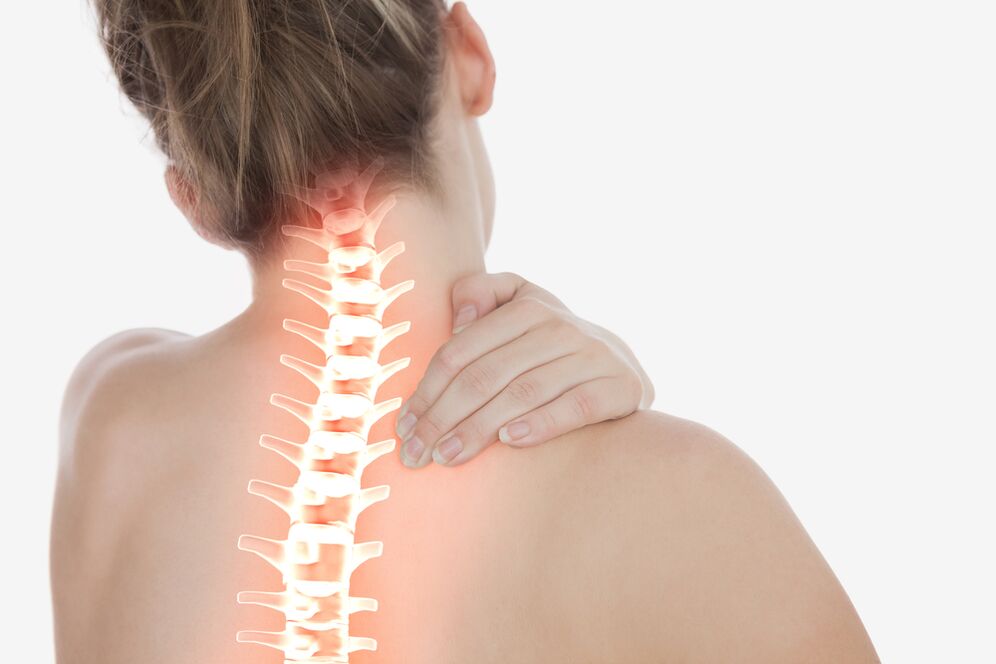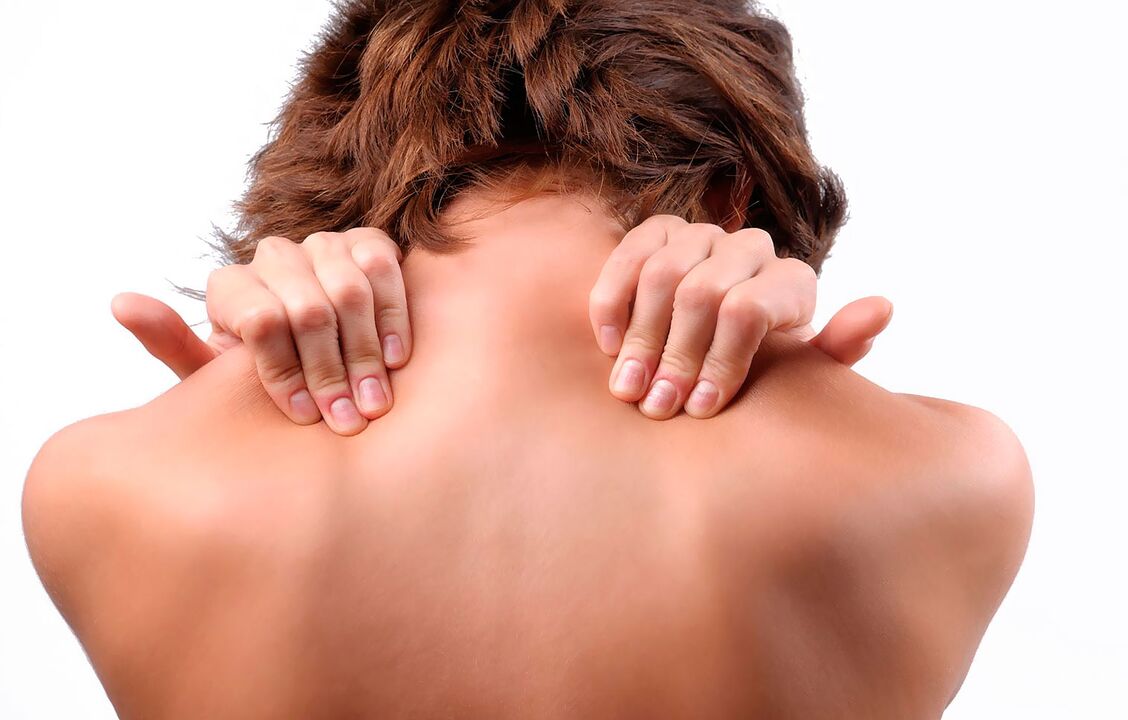The osteochondrosis of the spine is a disease caused by the destruction of the bones and cartilage tissues of the cervix, the thoracic and lumbar spine.
First, with the progression of the disease, the central part of the spinal disc is modified - the so -called jet nucleus. Therefore, the vertebrae loses some of its impact-absorbent properties, and improvement and cracks are formed on the fibrous ring along the periphery of the disc.
The further progression of the osteochondrosis of the spine leads to complications of the disease - the convexity of discs or tears of a fibrous ring and intervertebral hernia, as a result. Spinal instability in the affected area leads to pain and limited mobility of the head in osteochondrosis of the cervical spine, as well as to limited mobility of the body with osteochondrosis of the thoracic spine and lumbar.
In 75% of cases, it is osteochondrosis of the spine that is the cause of back pain. With age, the risk of spinal tissue dystrophy increases significantly, therefore, on average, the symptoms of osteochondrosis of the spine are observed in every second resident of the planet over 30 years.
The provocative factors for the development of spinal osteochondrosis are considered to be back injuries or systematic backload on the back with hard physical work or professional employment in vibrational conditions. If you need to do a lot of charging and unloading, buy a hydraulic collection for your car.
The early manifestation of the symptoms of osteochondrosis of the spine is caused by poor physical development, flat legs or excess weight. There is also a genetic predisposition to the loose structure of the intervertebral discs and abnormalities of the structure of the spine. Intensive fitness training in violation of the rules for the distribution of back load, sedentary lifestyle and malnutrition are also unfavorable in terms of spinal health.
The disease manifests itself as a number of typical symptoms. The osteochondrosis of the spine is characteristic: back pain, a feeling of tingling in the affected spine, reducing the amplitude of movement, increased pain in lifting, sharp movement, tension during cough or sneezing.
Chronic pain, as one of the symptoms of osteochondrosis of the spine, causes increased fatigue. When compressing the nerve roots of the spine with the spine, the pain may be more intensive and acute. Its location in this case is not limited to the area of the back, but is felt by a person in the area of the limbs.
The stage of the disease depends on the severity of the symptoms of osteochondrosis of the spine. In the first stage of osteochondrosis of the spine, the pain is virtually not felt if only the slight malaise and poor stability of the spine for injuries. Destruction of the fibrous ring, reducing the size of the vertebrae and pain of varying intensity is a symptom of osteochondrosis of the spine in the second stage.
The third stage of the disease is characterized by significant deformities of the bone and spinal tissue to the appearance of intervertebral hernias. The symptom of osteochondrosis of the spine at the largest fourth stage is the mass growth of the bones, limited mobility, intense pain, as well as complete or partial paralysis of the limbs caused by compression of the nerve roots.
Osteochondrosis of the cervical spine often leads to circulatory disorders due to compression of the arteries. This leads to intense headache, dizziness and seizures. With osteochondrosis of the cervical spine, spinal artery syndrome is sometimes observed. It is characterized by a sense of noise in the head, the image of "flies" or colored spots in front of the eyes. With osteochondrosis of the cervical spine, peripheral pain in the shoulders or hands are also possible.
Chest osteochondrosis can worsen the course of various cardiac pathologies. The disease causes the progression of neuralgia of interconnection (squeezing the nerves of interconnection). With osteochondrosis of the chest spine, there is a pain in the chest and the sensation of the "hall" in the center of the chest.
Osteochondrosis of the lumbar spine leads to the development of the following diseases: Lumbago and hernia.
Sciatica, as one of the complications of osteochondrosis of the lumbar spine, is characterized by damage to the sciatic nerve, pain in the gluteal region, hypotension (decreased tone) of the calf and gluteal muscles.
In the case of a symptom of lumbar part of osteochondrosis of the lumbar spine, there is acute pain in the lower back caused by displacement of the vertebrae or loss of the spinal disc.
Lumbar radiculitis, another complication of osteochondrosis of the lumbar spine, is provoked by the hernia of the largest discs of the spine. It is accompanied by pain in the ass with irradiation in the back of the thigh, a hole below the knee, lower legs and legs.
The preliminary diagnosis of "osteochondrosis of the spine" has been established by the neurologist after an initial examination regarding the patient's complaints about back pain and limited mobility. The stage of osteochondrosis of the spine is established depending on the degree of deformity of the spine, the patient's posture and the number of the affected discs.
All of the above symptoms of osteochondrosis of the spine are diagnosed by feeling the patient's back. The doctor also pays attention to the condition of muscle tone. Because in most cases the disease is accompanied by the hypertension of the posterior muscles.
Using tests to bend the spine, the patient's movement amplitude is determined. Due to the use of radiography, CT and MRI, the diagnosis is determined and determined by the future tactics of the treatment of osteochondrosis of the spine.
Conservative and surgical methods are used in the treatment of osteochondrosis of the spine. The purpose of the two is to eliminate the pain syndrome and to prevent the more progression of the spinal deformity.
At the same time, the surgical treatment of spinal osteochondrosis is only used if conservative therapy of the disease is ineffective.
The active stage of the implementation of conservative methods lasts an average of 2 months. At the beginning of it, a short increase in pain syndrome caused by the reaction of the body of drugs, physiotherapy exercises (exercise therapy) and physiotherapy. In conservative treatment of osteochondrosis of the spine, massage, manual therapy, extract and reflexology are also used. The effectiveness of the treatment of osteochondrosis of the spine depends on the systematic nature of the procedures and the persistence of the patient himself in the performance of exercise complexes.
Surgical treatment of spinal osteochondrosis is performed with hernias from intervertebral discs for a long time exceeding 6 months. The indication of surgery is also a reduction in the gap between the vertebrae to 1/3 of the original size and the compression of the roots of the spinal cord.
The leading method in surgical treatment of spinal osteochondrosis is discoctomy, ie removal of a deformed disc. The surgery can be minimally invasive using endoscopic instruments using the microdyctomy method, B-twin system, as well as laser evaporation of the nucleus of a deformed disc.
After surgical treatment of osteochondrosis of the spine, a rehabilitation period of 6 months is expected. During this, the patient is aimed at treating with sanatorium-resources to undergo a course of physiotherapy, manual therapy, acupuncture and more.



















